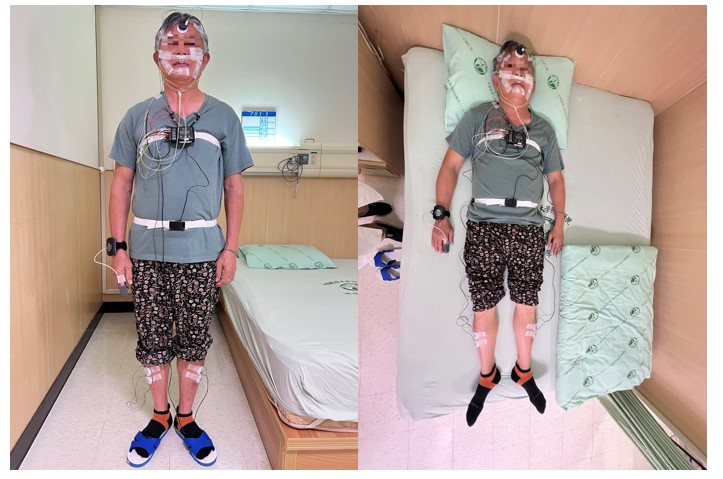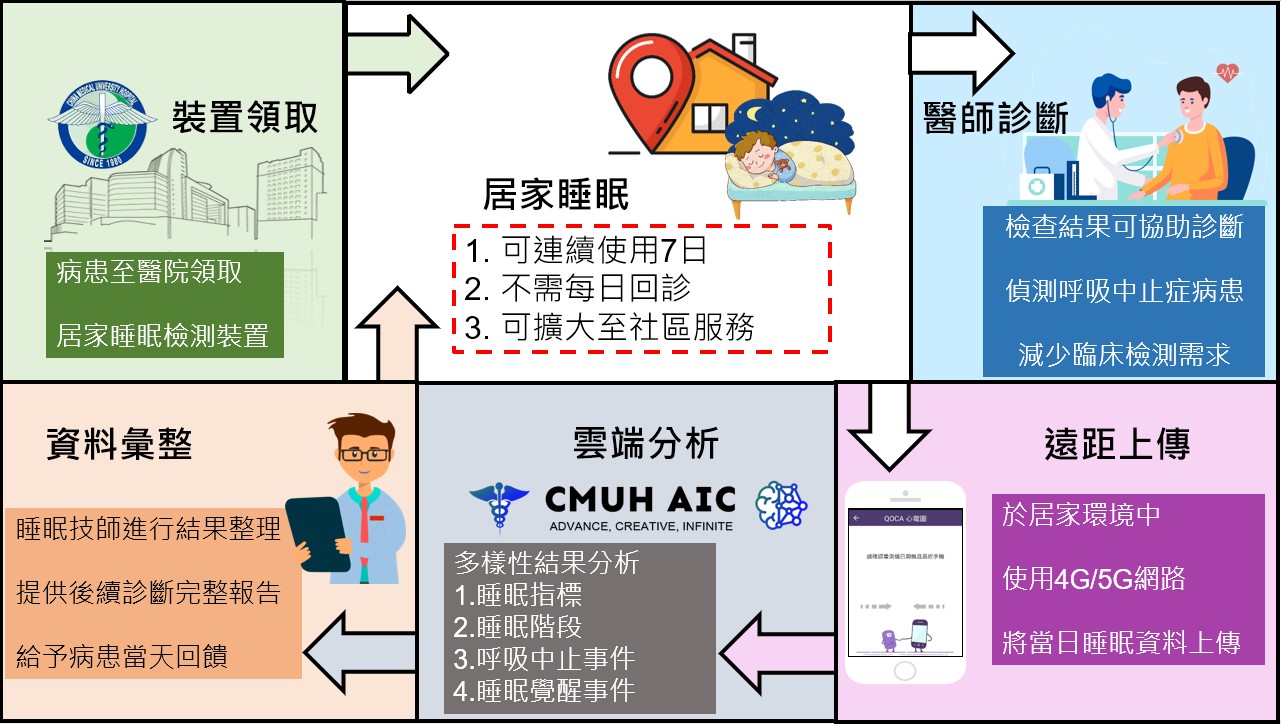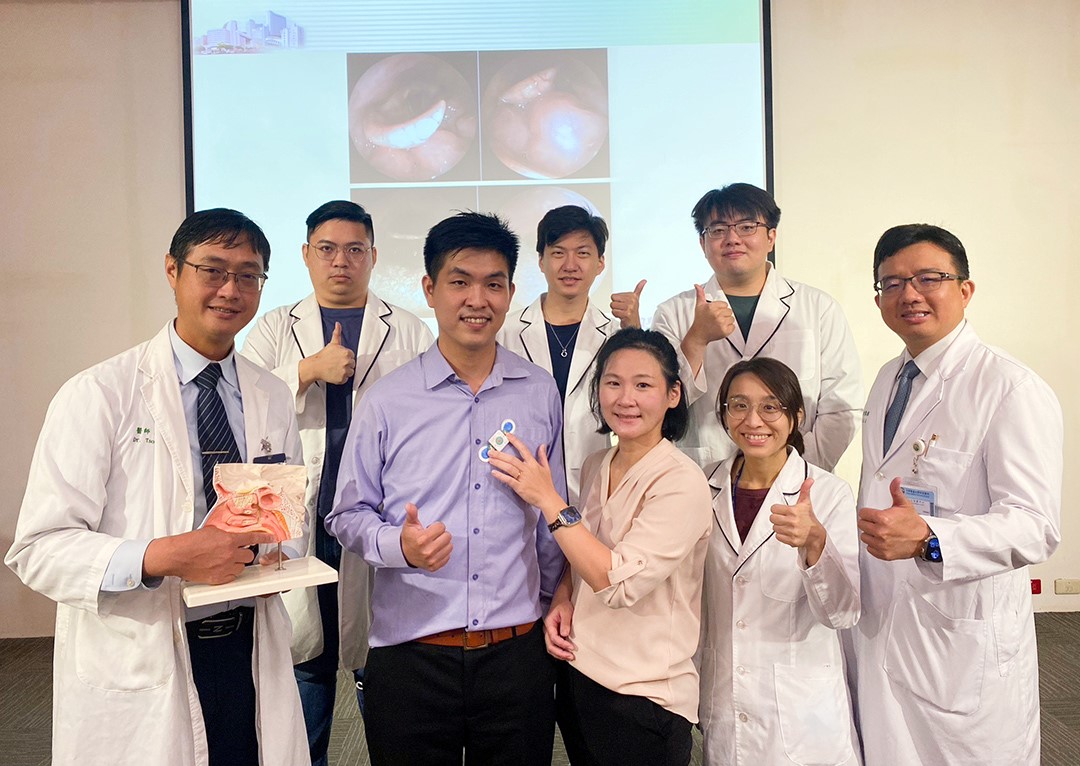A deep learning method to detect sleep apnea through single-lead electrocardiography applied in a large dataset
Research & Innovation
A deep learning method to detect sleep apnea through single-lead electrocardiography applied in a large dataset
Sleep is crucial for human health, yet modern life stress often leads to sleep issues, subsequently affecting health and quality of life. Therefore, sleep monitoring becomes crucial in providing sleep information and improving sleep quality. With the global sleep market gradually expanding, it also demonstrates the increasing concern people have regarding sleep issues. Particularly, sleep apnea, is regarded as a significant concern; however, its detection still requires a medical environment for smooth operation and testing, necessitating relatively high medical manpower and time costs.
The CMUH Home Sleep Monitoring System offers a convenient and efficient new way of detection. Unlike traditional PSG (polysomnography) which involves multiple types of physiological sensors requiring the attachment of multiple sensors, this detection method only requires the use of a single-lead electrocardiogram (ECG), which can automatically generate sleep monitoring reports. These reports include clinical sleep indicators such as AHI (Apnea-Hypopnea Index), aiding in the precise diagnosis of sleep-related issues. Compared to current methods, this approach reduces the complexity of sensor attachment, improves patient acceptance and comfort.


Figure 2 illustrates the workflow of the home sleep system. The device is obtained from the sleep center and can be worn at home for up to seven consecutive nights. After waking up, data can be uploaded to the Chinese Medical AI Center cloud via an app and delivered to clinical sleep technicians. Finally, the data is provided to doctors for bedside diagnosis and treatment recommendations. The home sleep monitoring device of this system is lightweight, easy to wear, and has a long battery life, allowing for easy and continuous implementation of home sleep monitoring for extended periods, with lower costs and less discomfort.
Regarding the clinical detection report generated by the system , it accurately provides clinical information. In addition to calculating the AHI (Apnea/Hypopnea Index, the number of respiratory events per hour) for grading sleep apnea, it can also detect periods of various sleep stages. This assists doctors in better understanding the patient's sleep condition and is performed automatically, reducing the time technicians spend on data labeling and lowering healthcare costs.

This project was awarded the NHQA National Healthcare Quality Award and the SNQ Symbol of national Quality in 2023. Additionally, a press conference for Home Sleep Monitoring System was held in August 2023, indicating the potential for providing a novel, efficient, comfortable, and stable home sleep monitoring solution in the future. This innovation aims to enable more people in need to access quality sleep monitoring services.
